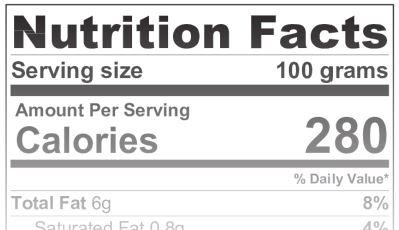Quinn on Nutrition: More on fructose and sodium
Letters from readers help me back up to check my facts. Here are a couple that came in recently:
“I think you failed your readers in your recent column, ‘Should we be afraid of fructose?’
‘The scientific studies are quite clear: Fructose in the context of most whole foods is fine. It is the fructose in high-fructose beverages that contributes to development of metabolic syndrome, to obesity in children and adults…’
Did you intentionally not mention high-fructose beverages in your review? How could you not mention this? Thanks for your reply.
— Alan”
Dear Alan,
This is what I wrote: “a more recent analysis found that consuming too much fructose from sugar-sweetened beverages increased one’s risk for metabolic syndrome, a condition that can lead to diabetes and heart disease. On yet another hand, researchers report that eating whole fruit or drinking not more than eight ounces of 100% fruit juice a day may actually protect against this same metabolic syndrome.”
I was intentional to use the term sugar-sweetened beverages rather than high-fructose beverages for these reasons:
Fructose is a simple sugar found in regular sugar as well as high-fructose corn syrup. And the amounts don’t vary much. Sugar (sucrose) is 50% fructose; high-fructose corn syrup is 55% fructose. Interestingly, another popular sweetener, agave syrup, is about 82% fructose.
Research has shown that a high intake of sugar-sweetened beverages contribute to metabolic syndrome. This includes those sweetened with all types of sugar, including sucrose and high-fructose corn syrup.
On the other hand, intake of fructose from other foods such as fruit, fruit juice, honey and yogurt have been shown to be protective against metabolic syndrome, according to a recent analysis.
Michael, who reads the column in the Daily Hampshire Gazette, wrote to question a column on turkey brining (soaking the bird in a salty liquid prior to roasting):
“There is a quote (in the column) that says, ‘After 12 hours, four ounces of white meat had 150 milligrams of sodium while the dark meat had 235 milligrams.’
Does this mean that after the brining process that was the total amount in each serving size or does that mean was added to the existing sodium levels in turkey? Earlier in the article, it was explicitly mentioned that brining added to the sodium levels, but I wanted to be sure that it was correct in the later part.
Best regards,
Michael”
Sorry for the confusion, Michael.
Yes, this refers to amount of sodium that was added to the meat during the brining process. Suffice it to say that brining does add sodium to turkey meat and dark meat appears to absorb more than white meat. Fresh turkey starts off with less sodium than a more processed bird. And how much sodium is ultimately absorbed depends on the concentration of your brine and how long you soak it.
(Barbara Quinn-Intermill is a registered dietitian and certified diabetes educator affiliated with Community Hospital of the Monterey Peninsula. She is the author of “Quinn-Essential Nutrition” (Westbow Press, 2015). Email her at to barbara@quinnessentialnutrition.com.)

